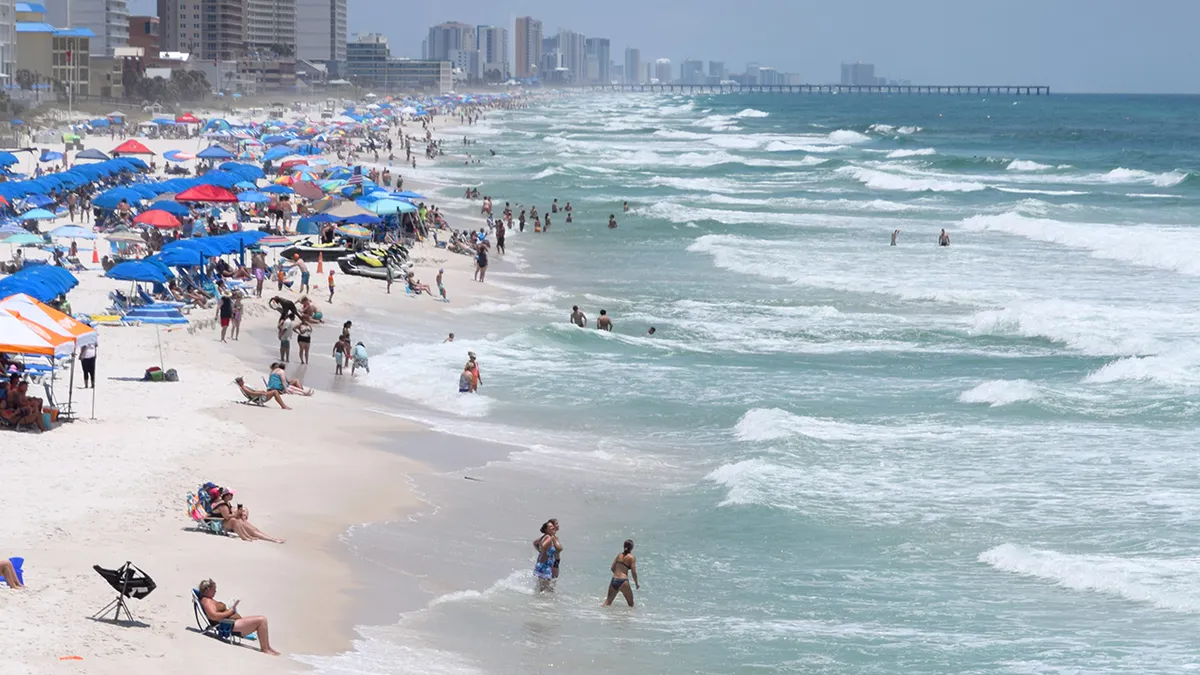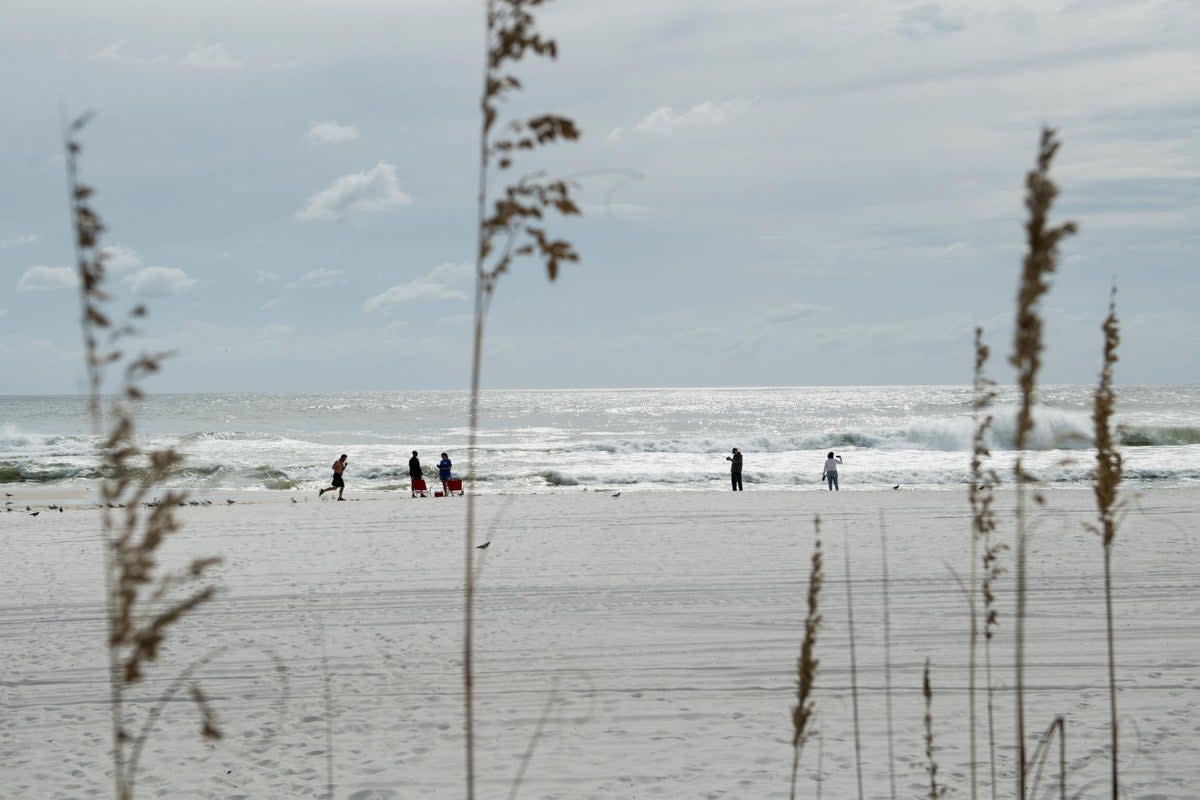Rip Current Dynamics
Panama city beach rip current – Rip currents are powerful, narrow channels of fast-moving water that flow away from the shore, often through breaks in the sandbar. They can occur at any beach, but they are particularly common in Panama City Beach due to the unique combination of its geography and wave conditions.
The relentless rip currents of Panama City Beach can drag even the strongest swimmers out to sea, but for those seeking a different kind of thrill, the Angels vs. Brewers prediction offers a safer way to experience the rush of competition.
While the beach’s unpredictable waters demand respect, the baseball diamond provides a more controlled arena where skill and strategy collide, offering a thrilling spectacle that rivals the power of the ocean.
Formation and Behavior of Rip Currents
Rip currents are formed when waves break near the shoreline and the water rushes back into the sea. Some of this water flows back in a straight line, while some of it flows sideways along the beach. The sideways-flowing water can create a channel of fast-moving water that can quickly pull swimmers away from the shore.
Panama City Beach rip currents are treacherous forces, but even they can’t match the intensity of the angels v dodgers rivalry. Like the rip currents that pull swimmers out to sea, the rivalry between these two teams has drawn fans into a whirlpool of emotions.
Yet, just as the rip currents eventually release their grip, the angels v dodgers rivalry will one day come to an end, leaving behind only memories of the fierce battles that once raged on the field.
Rip currents are typically narrow, only a few feet wide, but they can be very strong. The speed of a rip current can vary depending on the size of the waves, the tide, and the shape of the beach. Rip currents are often strongest during high tide and when the waves are large.
The relentless rip currents of Panama City Beach have claimed countless lives, leaving behind a trail of shattered dreams and unanswered questions. In the wake of the recent tragedy that saw three swimmers vanish into the unforgiving waters, the community is once again grappling with the harsh reality of 3 missing panama city beach.
The relentless pull of the rip currents serves as a constant reminder of the dangers that lurk beneath the surface of this seemingly idyllic paradise.
Factors that Influence Rip Current Strength and Location
The strength and location of rip currents can be influenced by a number of factors, including:
- Wave size: Larger waves create stronger rip currents.
- Tide: Rip currents are often stronger during high tide.
- Beach shape: Beaches with a steep slope are more likely to have rip currents.
- Sandbars: Sandbars can create breaks in the waves, which can lead to the formation of rip currents.
Visual Representation of Rip Current Characteristics
| Beach Section | Rip Current Strength | Rip Current Location |
|---|---|---|
| Near jetties | Strong | Near the ends of jetties |
| Near piers | Moderate | Near the ends of piers |
| Mid-beach | Weak | Randomly spaced |
Rip Current Safety: Panama City Beach Rip Current
Rip currents are a serious hazard in Panama City Beach, and it’s important to be aware of the risks and how to stay safe.
In 2021, there were 12 rip current-related deaths in Panama City Beach. These deaths are a tragic reminder of the power of rip currents and the importance of taking precautions when swimming in the ocean.
Common Misconceptions and Myths about Rip Currents, Panama city beach rip current
There are a number of common misconceptions about rip currents that can lead to people getting into trouble. Some of these misconceptions include:
- Rip currents are only dangerous for weak swimmers.
- Rip currents can only occur during high tide.
- You can swim out of a rip current.
These misconceptions are all false. Rip currents can be dangerous for swimmers of all ages and abilities, and they can occur at any time of day or night. If you are caught in a rip current, it is important to stay calm and follow the instructions below.
How to Escape a Rip Current
If you are caught in a rip current, the most important thing to do is to stay calm. Panicking will only make the situation worse. Once you are calm, follow these steps:
- Don’t try to swim directly back to shore. This will only tire you out and make it more difficult to escape the rip current.
- Swim parallel to the shore until you are out of the rip current. Once you are out of the rip current, you can then swim back to shore.
- If you are unable to swim out of the rip current, call for help. A lifeguard or other trained professional will be able to help you escape the rip current.
Rip Current Mitigation

Rip currents pose significant hazards to beachgoers, warranting proactive measures to mitigate their risks. Technological advancements and engineering solutions play crucial roles in enhancing safety and reducing the likelihood of rip current incidents.
Technological Solutions
Early detection and warning systems are vital for timely alerts to beachgoers. Remote sensing technologies, such as radar and lidar, monitor ocean currents and wave patterns to identify rip current formations. These systems provide real-time data, enabling lifeguards and beach patrols to issue warnings and take preventive actions.
Drones equipped with thermal imaging cameras can also assist in detecting rip currents by identifying temperature differences in the water. The data collected by these drones can be used to create detailed maps of rip current locations, aiding in risk management and public education.
Beach Nourishment and Engineering Measures
Beach nourishment involves replenishing eroded beaches with sand to restore their natural contours and reduce the formation of rip currents. By increasing the beach’s width and slope, nourishment helps dissipate wave energy and prevents the formation of strong currents. However, the effectiveness of beach nourishment depends on factors such as the frequency of storms, wave climate, and sediment availability.
Other engineering measures, such as groins and jetties, can also be used to alter wave patterns and reduce rip current formation. Groins are structures built perpendicular to the shoreline, while jetties extend parallel to the beach. These structures redirect wave energy, creating calmer waters and reducing the likelihood of rip currents.
Lifeguard and Beach Patrol Best Practices
Lifeguards and beach patrols play a critical role in managing rip current risks. They are trained to identify rip currents, rescue victims, and educate beachgoers about rip current safety. Effective practices include:
- Regular patrolling of beaches to identify and monitor rip currents.
- Posting warning signs and flags to alert beachgoers to the presence of rip currents.
- Educating beachgoers about rip current safety and how to escape if caught in one.
- Performing rescue operations using appropriate equipment and techniques.
- Collaborating with other agencies, such as the National Weather Service, to monitor weather conditions and anticipate rip current risks.
The relentless Panama City Beach rip current surged forward, its cold embrace threatening to drag swimmers out to sea. But amidst the chaos, the news of the Brewers vs Angels last game offered a brief respite from the fear. The tension of the game mirrored the surging currents, each pitch and swing a battle against fate.
As the last out was recorded, the sun began to set, casting a warm glow on the beach and providing a sense of calm after the storm.
The rip currents at Panama City Beach can be treacherous, but the thrill of a close baseball game can be just as exhilarating. For those who prefer to stay dry, the dodgers vs rockies prediction is a safer bet. The Dodgers are the favorites, but the Rockies have a few tricks up their sleeves.
Back on the beach, the rip currents continue to lurk, a constant reminder of the dangers that lie beneath the surface.
